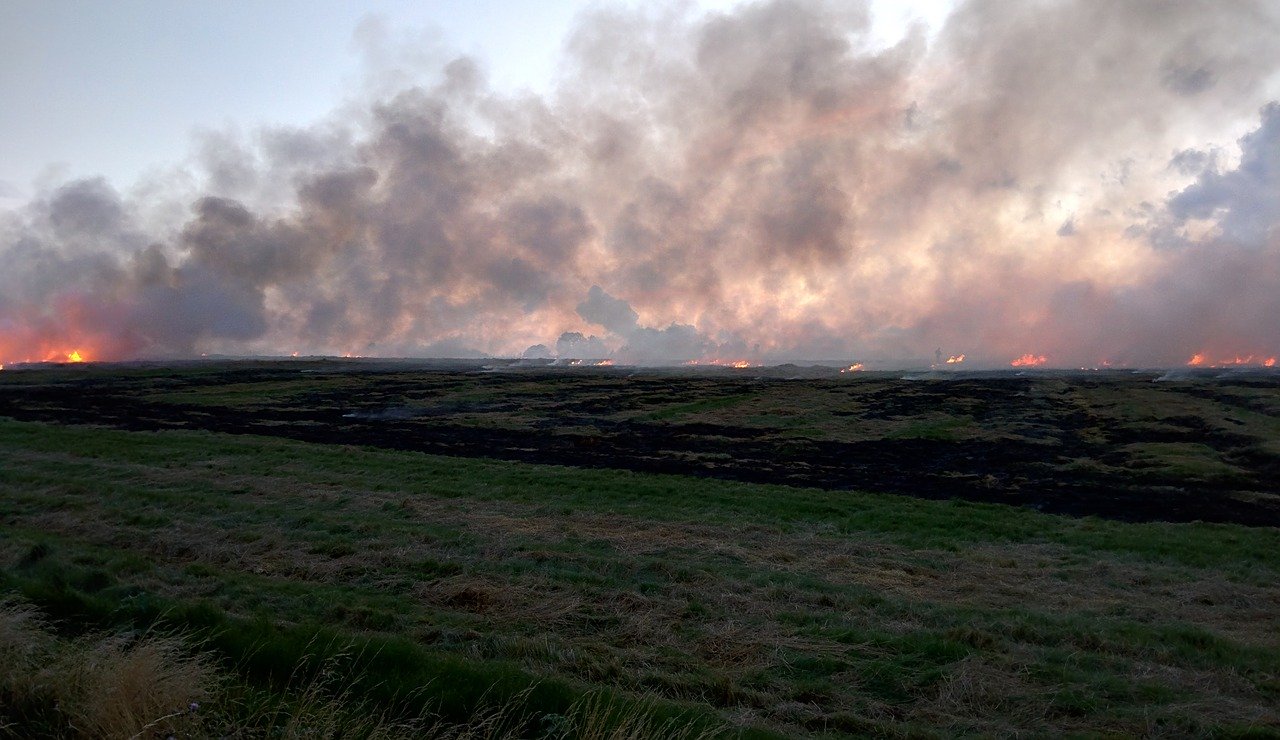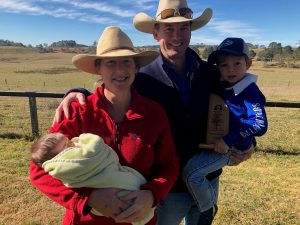Bushfires Hit Ag: The Impact on Australian Farmers
April 8, 2020

When Stuart Austin heard about the Aug. 31, 2019 fire that started 20 kilometers north of Ebor, where he manages Wilmot Cattle Co., he wasn’t too concerned at first. His region in New South Wales is known for its high, reliable rainfall, so he never imagined it could burn there.
But last year they were extremely dry, receiving only about 17 inches of the average 52 they get annually. On Friday, Sept. 6, the winds switched direction, blowing the fire straight at Wilmot at 50-60 kilometers per hour. By 4:30 p.m., it had arrived.
Luckily, Wilmot practices holistic, regenerative ag management that requires intensive rotational grazing, they only had two mobs of cattle on the farm that day and were able to move them to safety. But in a span of 3-4 hours, the fire had burned about 2,500 acres of land, taking foot-high grass they had been preserving to feed cattle. Stuart estimates the financial loss was around $500,000, and without those pastures, they had to let half of their cattle go.

Others suffered even worse damage. One neighbor’s entire place burned down and they lost 60 head of cattle. Another lost around 150 head, along with 35 kilometers of fencing.
It’s now been 6 months since the fire and Stuart says they’ve got some momentum back now. They received a little rain on Christmas Day, and several more inches came in January and February. Stuart now feels the drought has finally broken, with grass species like fescue and cocksfoot returning thanks to their regenerative ag practices.
“By constantly selling cattle and letting our country recover, it’s absolutely exploded with grass,” he says. “Our breeding operation has had more grass there than it’s had in the last 6 years.”But for the industry as a whole, it’s going to be a long process to recover from the damage, which has only been compounded by the ongoing drought.
Drought Fuels Bushfire, Hurts Industry
Adam Wall, Regional Development Manager ANZ, says the fires hit the dairy and livestock-producing states of New South Wales and Victoria the hardest. “Due to the time of year, the impact in terms of losses to grain growers and cotton growers has been fairly minimal,” he explains. But the drought — which Adam says has affected most of the country for 4-5 years, some places as long as 6 — has been hurting the wider agriculture industry much longer, especially the cropping industry.
“The east coast of Australia hasn’t had a significant cereal crop now for 3 years,” he says. “For the first time in almost 15 years, Australia has issued bulk grain imports. That’s virtually unheard of here, and goes to show the substantial grain shortages.”
Those dry areas only fueled the fires further, causing significant damage to dairy and livestock producers. The most recent data from Meat and Livestock Australia indicates that 20% of the national cattle herd and 30% of the national sheep flock have either been significantly or partially impacted by the bushfires.
The hit on farmers has hurt the industry as a whole. Farmers haven’t had the available income stream to make required capital purchases, Adam explains, which has affected businesses like equipment companies and their retail partners. He adds that rural areas where agriculture was the primary economy are really hurting. “The ripple effect across the industry has been very widespread.” Virtually every part of Australia’s vitally important agricultural economy has been impacted, Adam says. “What will these bushfires end up doing to an industry already under significant pressure” he asks. “No doubt it’s going to have an impact that is going to have direct and indirect issues.”
How You Can Help
The Australian government has responded to the disaster by creating the National Bushfire Recovery Agency and allocated an initial $2 billion to help rebuild the people and communities affected by it, with $100 million going to farmers, fishers, and foresters. But you can help support the recovery even further. The Australian government is requesting only financial donations and its website has a list of several charities where donations can be made, as well as organizations looking for volunteers.
Stuart recommends donating to BlazeAid, a volunteer-based organization that helps rebuild fences and other structures in rural Australia after natural disasters. “They’re an absolute Godsend and worth supporting,” he says. And for those who personally know farmers in Australia, one of the best things you can do is directly reach out and see how they’re doing, Stuart says, as the mental health impact is probably the most unseen and unheard aspect of the fires.
“It certainly challenged me mentally for those few months,” he recalls. “People don’t tell you that they’re not feeling well or that they’re struggling, but give them an opportunity to just get it off their chest of what they’ve been up to or dealing with, I think helps a lot. “It’s difficult for people to say, ‘I really feel like crap.’ It’s been a huge issue throughout the drought and with this fire. I don’t think everyone fully comprehends how bad it is.”
If you are a farmer who has been impacted by the bushfires, help is available. Please visit FarmHub’s list of mental health resources for counseling and support.
